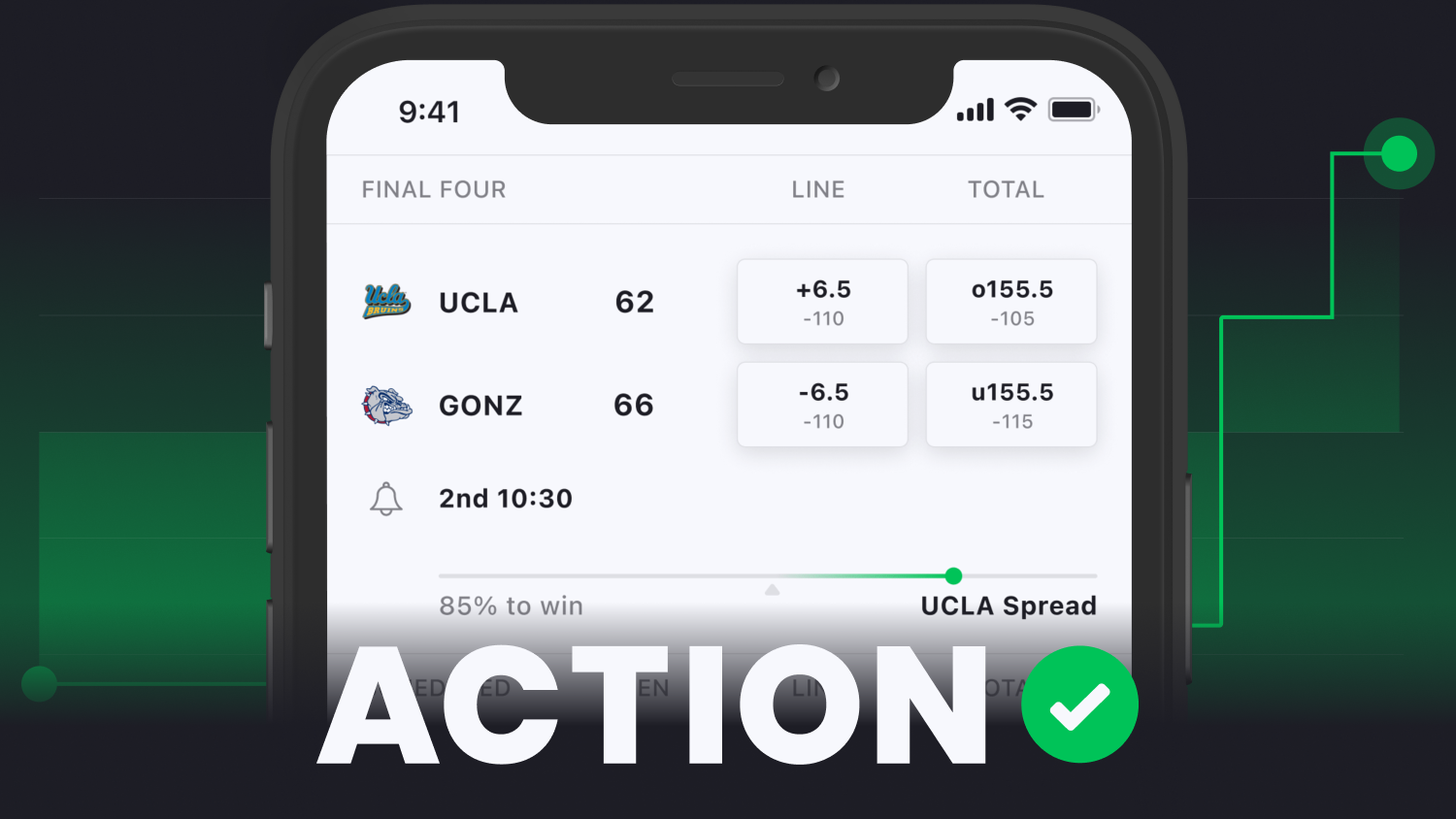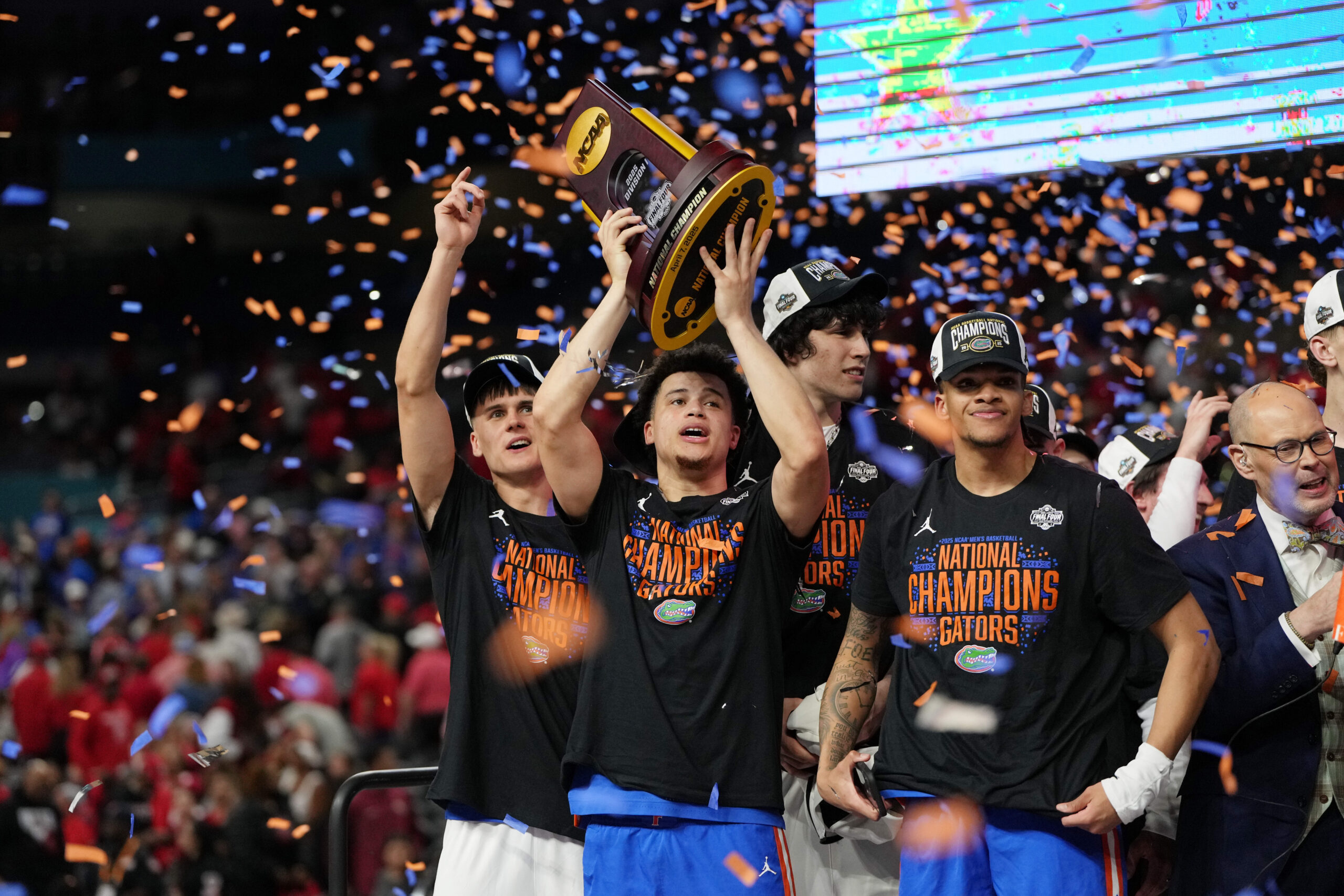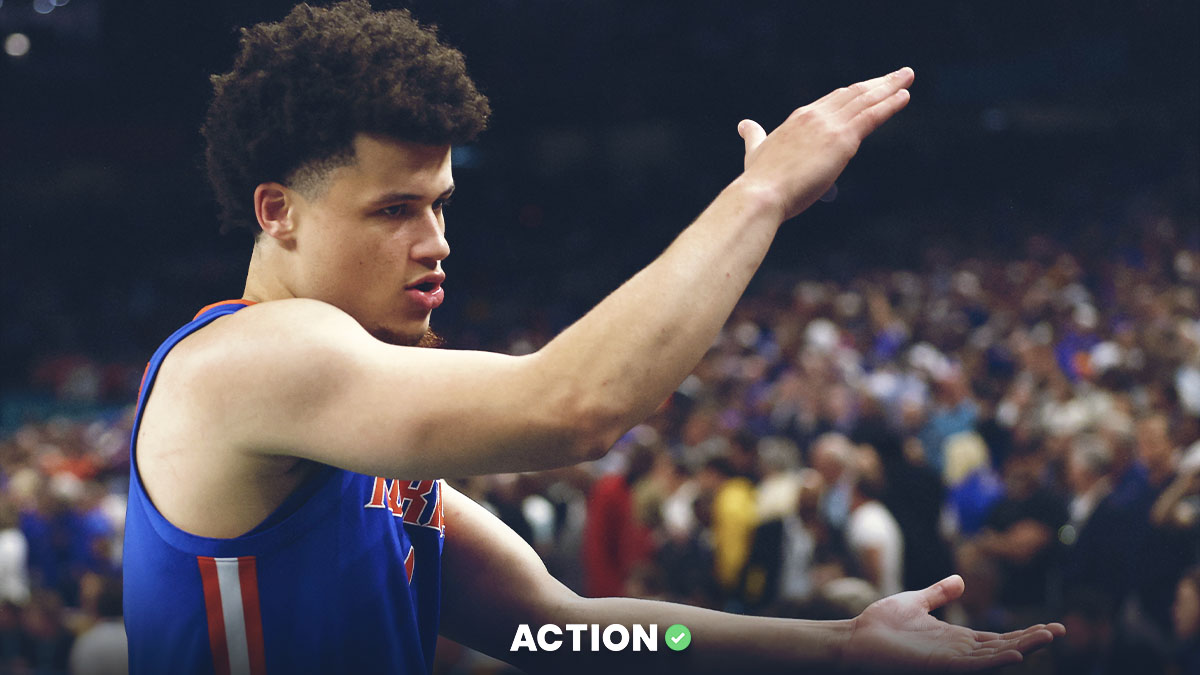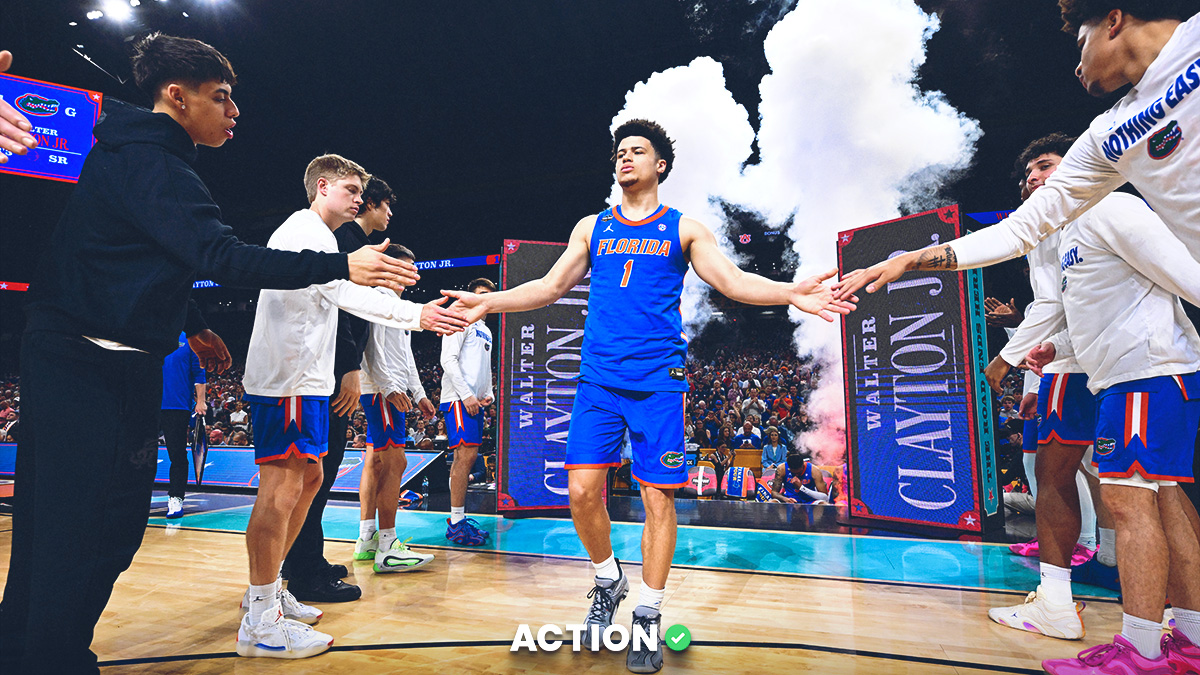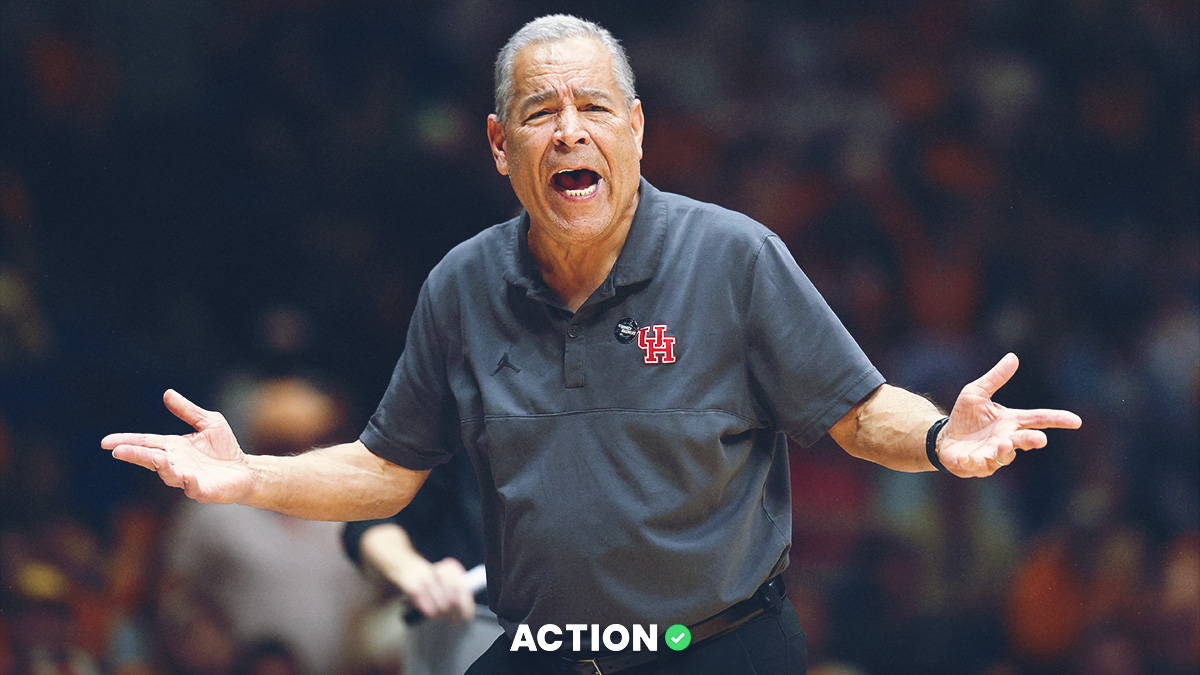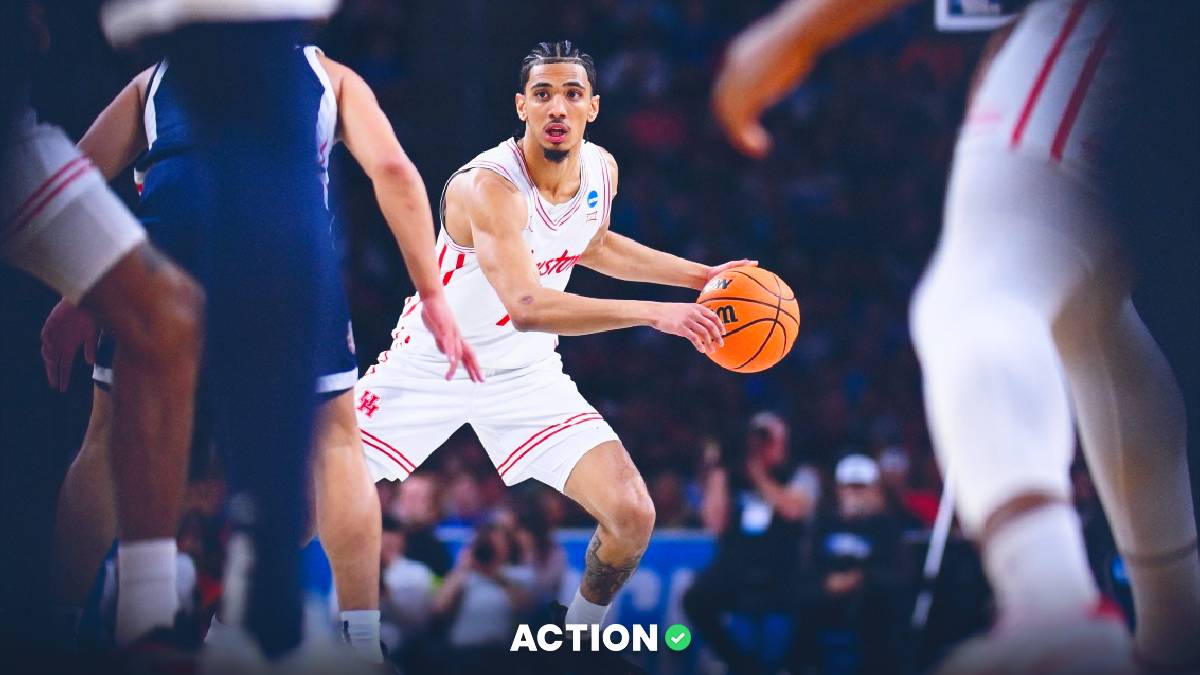I grew up in Southern Vermont, in the small town of Manchester. And I grew up on Vermont basketball.
As I followed the ‘Cats through the years, I began to love all the America East squads. I spend an inexplicable amount of time watching and researching America East basketball, and I know more about the league, its teams and its players than almost anyone.
Somehow, I’ve convinced my editors to let me cover the AmEast in-depth for The Action Network.
So, needless to say, these America East pieces are the most important things I write all year.
I highly recommend reading my America East preseason preview piece before diving into this pre-conference play update. I went a little more in-depth in the preseason piece, and this update would make more sense when paired with that one.
Surprisingly, I struggled reading the conference in the early year, but the picks I advised in the preseason piece all did well:
- New Hampshire vs. Syracuse Over (Nov. 6): W
- New Hampshire vs. Brown Over (Nov. 14): W
- Vermont ATS vs. Charleston (Nov. 16): W
- UMass Lowell ATS vs. Arizona State (Nov. 16): W
- New Hampshire vs. Sacred Hart Over (Nov. 30): W
- New Hampshire vs. Columbia Over (Dec. 3): W
I sure do love those New Hampshire Overs.
Regardless, we’re hitting conference play, so we move.
Which teams are overperforming? Which teams are underperforming? Which teams am I relatively higher or lower on compared to the preseason?
It’s a great league to watch and follow along, so follow along and strap in for another America East Conference season.
Lay of the Land
If you’re also a fan of AmEast basketball, I wonder if this picture is as shocking to you as it is to me.
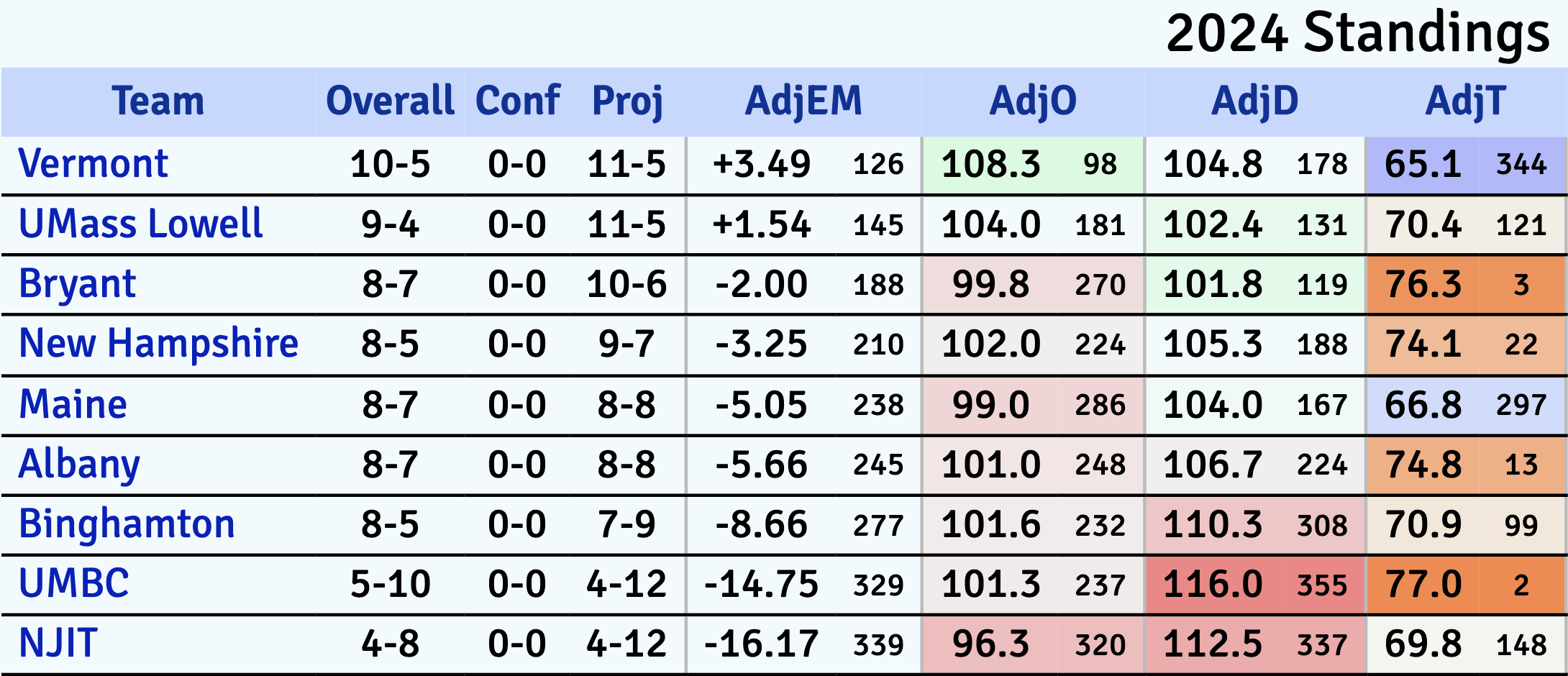
Underneath Vermont’s reign, the conference became slow-paced and somewhat stale. America East basketball became more about defense and shot selection rather than running-and-gunning.
But that narrative is changing. Four of the nation’s top-25 fastest teams by tempo lie in the AmEast. Another ranks 96th and another ranks 119th.
Since when?
To be fair, the change wasn’t wholly unexpected. Bryant entered the AmEast last season and immediately injected up-tempo play into the league. New Hampshire’s first-year head coach — Nathan Davis — promised the Wildcats would play faster than Bill Herrion’s slow-paced teams ever did, and he’s kept his promise. Dwayne Killings has slowly upped the Danes’ tempo since he took over in 2022.
Suddenly, America East basketball is about open-court, quick-strike offense.
Honestly, what a treat.
AmEast teams went a combined 60-50-2 to the Over in non-con play (55%). The boys are playing faster than the market ever thought, and it’s pretty entertaining.
Speaking of market expectations, here’s how the AmEast scored ATS against their respective non-con schedules:
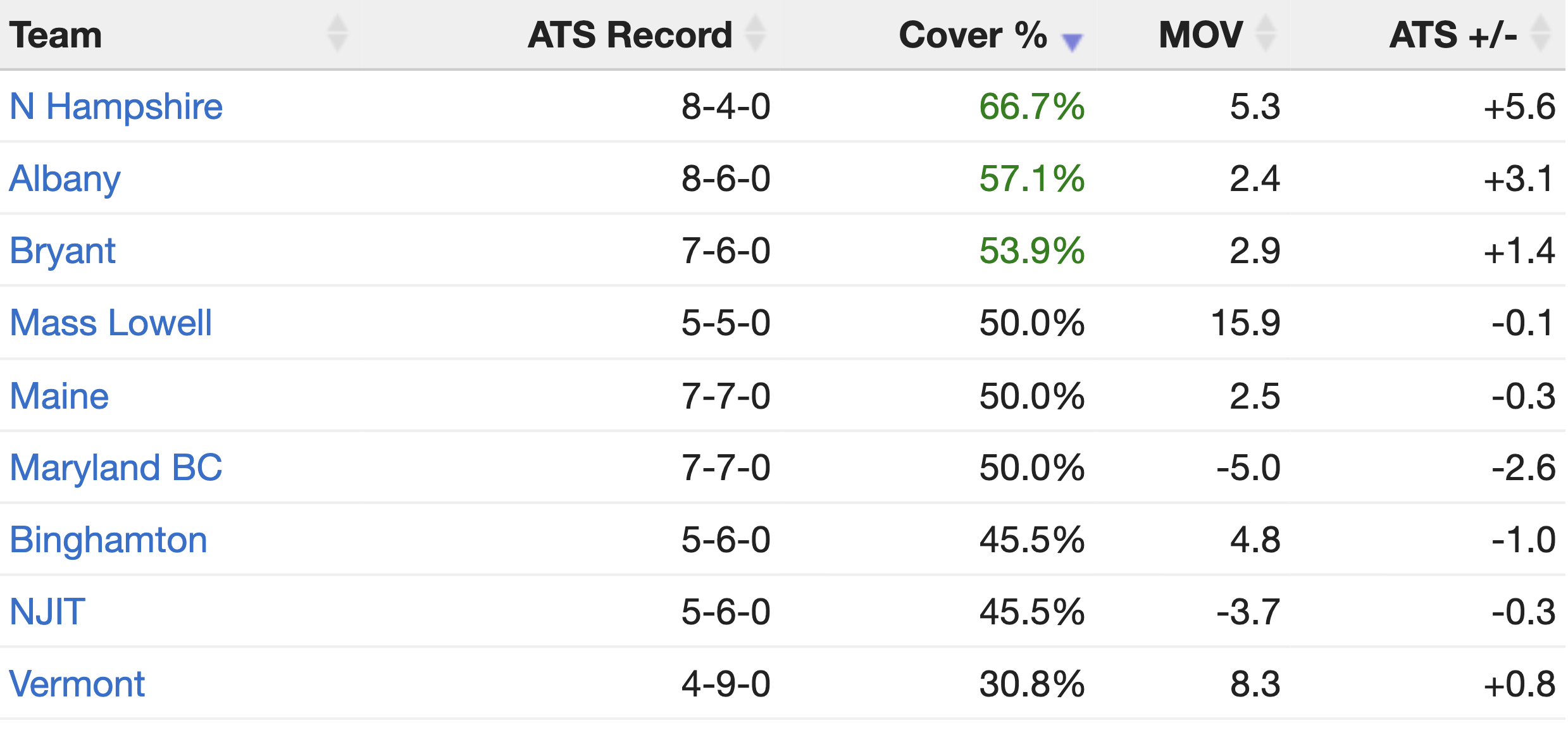
I’ll dig deeper into these records in each team section, but there’s one main point I want to make.
Vermont and UMass Lowell are underperforming. New Hampshire and Albany are overperforming.
With more pace and shooting, more variance has been injected into the league. And with some conference powerhouses struggling, I think the league is more wide-open than ever.
Anything can happen in the AmEast this year.
Again, what a treat!
I’m still targeting one specific team in the futures market, but feel free to take a flier on whichever team you believe in the most. I wouldn’t oppose futures tickets on New Hampshire, Albany or Binghamton.
Tier 1: Championship or Bust
Vermont Catamounts
I’m a tad worried about Vermont’s interior defense.
Among the 362 D-I college basketball teams, the Cats currently rank:
- 358th in post-up PPP allowed by ShotQuality’s numbers
- 339th in post-up PPP allowed by Synergy’s numbers
- 339th in at-the-rim PPP allowed
- 159th in pick-and-roll roll-man PPP allowed
They’re allowing 32 paint points per game, with 46% of opposing buckets coming down low.
I wrote in my preseason preview that Ileri Ayo-Faleye had transformed the Cats’ interior. He’s still playing well, but Nick Fiorillo and Matt Veretto struggle to defend the low block. Now that Vermont runs almost exclusively two-big lineups — as opposed to mainly four-guard lineups last year — this weakness could be the difference against imposing AmEast frontcourt offenses.
I’m unsure when it happened, but Ileri developed a 3-point shot. He’s 6-for-14 (43%) on the year, which isn’t crazy volume, but it’s important because defenders now have to respect him. He’s Vermont’s best and most important defender, and if he can space the floor in John Becker’s five-out offense, that’ll allow him to stay on the court more.
Regarding the team’s most valuable player, Tarleton State transfer Shamir Bogues has been a revelation. He's a true two-way player, scoring 12 points, grabbing six rebounds and snatching two steals per game. He’s the definition of a spark plug.
Fairfield transfer TJ Long’s scoring prowess is also better than I ever imagined. He’s shooting 51% from 2 and 39% from 3 while scoring 1.3 spot-up PPP (93rd percentile).
He’s also been responsible for one of the most insane finishes to a game I can remember.
And he made this eventual game-winning shot over Brown in the Cats’ final non-conference game.
Talk about a clutch player.
His 13 points per game have been among the most impactful to any mid-major team. He’s replacing plenty of the Finn Sullivan shooting production from last year.
Of course, Vermont saw its close-game regression flip against Miami (OH) in an upsetting loss.
Veretto is playing elite ball, as expected. He’s scoring well in the post and off the short roll, while dishing out smart passes in Becker’s motion and never turning the ball over. His rebounding has taken a hit, but the Cats’ rebounding has been good overall.
He’s also shooting well. His range is so impressive – I think Veretto has legit NBA range, which not many mid-major forwards can say. Vermont can space the floor so wide with him on the court, and most forwards can’t defend so far away from the basket.
TJ Hurley has been good in his “bench juice” role, scoring nine points per game and 1.3 PPP in spot-up situations (93rd percentile).
The big question is when Aaron Deloney will start living up to his potential. I wrote in the preseason piece that Deloney was the AE POY favorite, but he’s been merely average.
Deloney is great when he’s aggressive and makes quick decisions – shooting, driving, kicking, getting to the line, etc. But he’s been too hesitant and seems scared to step up into that go-to guy role. In short, he’s been inconsistent, scoring 15 against Northeastern and three against Brown.
He’s also still struggling on defense, especially against ball screens. At the beginning of the year, Becker told me that defense was the key to unlocking his full potential. So far, not so good.
Catamount Betting Thoughts
I have some real worries about my Cats – two in particular.
First is the interior defense. Things could get ugly if they don’t hold up against the AmEast frontcourts.
The second is that they’re not generating enough open jumpers. Only a third of their catch-and-shoot opportunities are unguarded, the fifth-lowest mark nationally.
That’s huge for a perimeter-based, shoot-first offense, and it partially explains their inconsistent non-conference play. Things are good when the tough shot-makers make shots (see: wins over Charleston, Saint Louis, Yale, Toledo) and bad otherwise (see: losses to Liberty, Bradley, Virginia Tech).
That said, Becker’s offense is predicated upon tough shot-making, and he usually has the offense peaking at the right time (i.e., March). Vermont still boasts the deepest backcourt in the league, with six guys I'd trust to play 30 minutes a night.
The Catamounts are a dynasty for a reason, and they’re still the favorites to cut down the nets.
I’m passing on any Vermont bets, although I think Becker and Vermont are vulnerable at the top. After all, they went a league-worst 4-9 ATS in non-con play.
Heavy is the head that wears the crown.
ESPN BET has officially launched launching their new sportsbook. Register with Action’s ESPN BET promo code TANBONUS for a welcome offer!
Tier 2: Best Chances of Knocking off Vermont
UMass Lowell River Hawks
In my preseason preview piece, I wrote about three primary worries I had surrounding Lowell this year:
- Defending without fouling
- Turnovers
- 3-point shooting regression
The good news: Lowell is defending without fouling! The River Hawks have jumped to 86th nationally in free-throw rate allowed, a huge improvement from last year’s mark. Max Brooks is still among the league's best rebounders, interior defenders and rim protectors.
The bad news: everything else.
Lowell’s still throwing the ball away over 20% of the time, ranking 310th nationally. Point guard and primary ball-handler Ayinde Hikim hasn’t improved upon his assist-to-turnover rate one bit.
Meanwhile, the shooting regression is worse than I ever could’ve imagined.
Lowell is making less than 30% of its long balls, an eight-point percentage decrease from last year. The Hawks aren’t creating good looks, ranking 345th nationally in ShotQuality’s Spacing metric and 323rd in their catch-and-shoot 3-point PPP metric.
Of course, this is primarily because of Abdoul Karim Coulibaly.
The big man went down against Saint Peter’s on Nov. 20 and hasn’t returned since. Without him, the River Hawks went 3-3 SU and 1-5 ATS against D-I competition. They lost outright to Merrimack and Central Connecticut as double-digit favorites.
There might not be a player more important to his team than Coulibaly, at least at the mid-major level. His interior scoring is so essential, not just because he’s an impossible-to-defend post scorer (first among AmEast players this year in true-shooting percentage, 74%), but also because he collapses defenses by requiring a double-team, opening up perimeter shots.
Without him, Lowell’s shooting – and post-up scoring, for that matter – is in the toilet. That’s worrisome for a team already trying to replace 62% of its made 3s from last year’s program-record-setting 26-win team.
River Hawk Betting Thoughts
We haven’t heard a word about Coulibaly. Us AmEast fans are in the dark.
If he’s out for a significant period, the River Hawks are cooked. I’ve downgraded them from the “Championship or Bust” tier only because of this injury.
Sure, the River Hawks are due for some positive shooting regression on offense, but it’s hard to see that coming without Coulibaly in the fold.
And it’s negated by the severe negative shooting regression that looms on defense. Opponents are shooting only 25% from 3 against them, which is impossible to sustain in the long run.
Lowell is elite at preventing good 3-point looks, ranking 25th nationally in Open 3 Rate Allowed and tops in Low-Quality 3s Allowed, per ShotQuality.
Still, again, no team will keep opponents from shooting 25% from deep over an entire season. ShotQuality projects opponents should be making closer to 32% of their 3s based on those “low-quality” attempts.
There are two main things we can take from this.
First, Coulibaly’s injury allows other teams to jump into championship contention. One program, which I’ll talk about in a second, is primed to take advantage.
Second, Lowell is a fade team for now, but if Couliably comes back, the River Hawks could be a good play-on team for the remainder of conference play. Books – which don’t know much about low-major college hoops injuries – could price the River Hawks based on non-Coulibaly metrics, undervaluing them in the short term.
Picks: Fade UMass Lowell ATS without Coulibably | Bet UMass Lowell ATS with Coulibaly
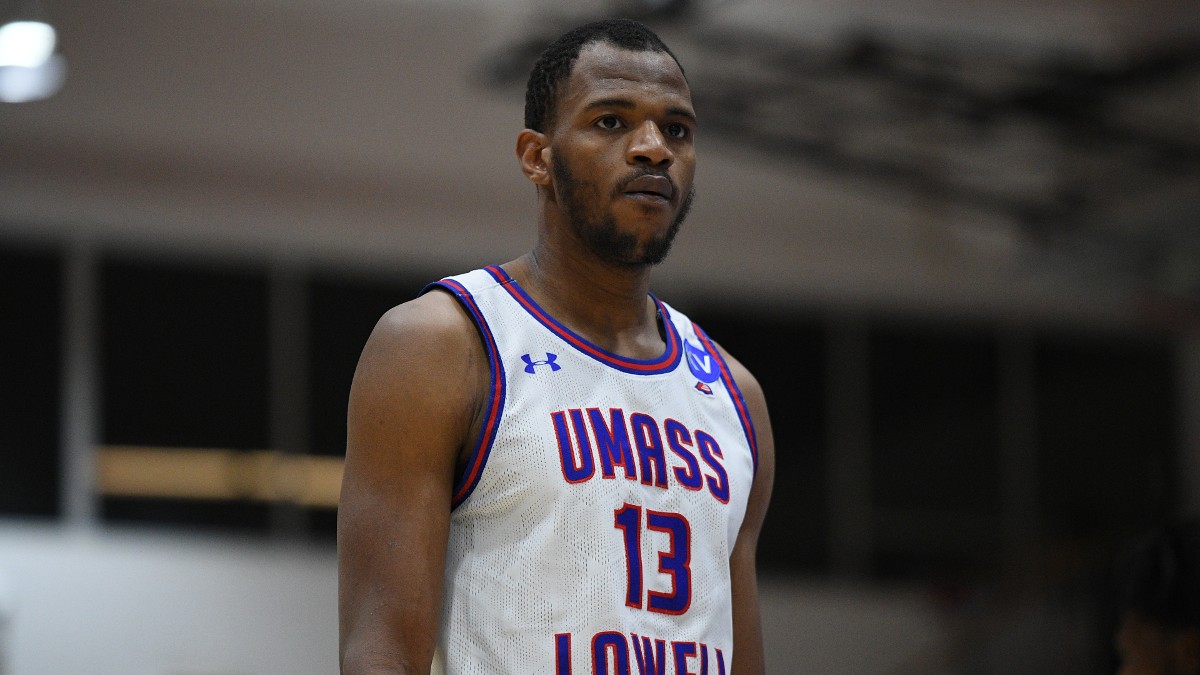
Maine Black Bears
Maine lost a few toughies in the non-con, including three straight to end the campaign against UCF, FIU and Minnesota.
It’s still Maine’s best start to a season since 2004. And it’s worth mentioning star point guard Kellen Tynes was unavailable for the loss to FIU.
This wasn’t unexpected. It’s the Chris Markwood effect combined with returning production and more experience. In my preseason preview piece, I wrote that this was the year for Maine to make a huge jump, and I’d argue the Bears are right on schedule.
Markwood is a savant, and his four returning starters are playing great ball. The Bears also rank 18th nationally in minutes continuity. Everybody knows their roles and how to execute the system.
Tynes and backcourt mate Jaden Clayton spearhead the conference’s best defense. These guys are swarming.
They’re good against ball screens (.91 PPP allowed, 20th nationally). They’re good at the rim. They’re good against cutters. They’re great in isolation and excellent against mid-range shooters (.74 PPP allowed, 19th nationally). They excel in defending post-up sets (.77 PPP allowed, 49th nationally).
And they still snatch steals (12.6%, 30th nationally), the bedrock upon which the Black Bears' defense is built. Tynes and Clayton combine for over three per game.
Offensively, I’d say Tynes has been moderately better year over year.
He’s scoring almost as much (13.4 PPG), even if his ORtg has dropped slightly (down five points, from 103 to 98).
However, he’s shown substantial improvement as a ball-screen initiator, with his PPP on the sets jumping from .76 to .91. Considering Markwood’s heavy reliance upon the pick-and-roll, executing on-ball screens is more important than anything.
I’m worried about Clayton, who's still struggling to score efficiently. He’s only making 37% of his shots, and his pick-and-roll PPP has dropped .13 year over year.
However, Maine might not need its backcourt to become much better offensively.
You see, the thing I didn’t see coming was the monstrous improvement of Peter Filipovity on the interior. And to some extent, Kristians Feierbergs, but mainly Peter.
I thought these two could improve moderately now that they weren’t stuck behind elite shot-maker Gedi Juozapaitis, but this is insanity.
Filipovity is pouring in 14 points and snagging seven rebounds per game on 62.3% true shooting. His ORtg has soared to 120, the highest on the team and top-300 nationally.
He’s dynamic offensively, scoring in transition and dropping in 10 paint points per game. He’s showcasing a surprisingly deep bag in Markwood’s ball-screen motion. He’s suddenly among the highest-usage, most efficient players in the conference.
He’s also rebounding like crazy, defending the post (.73 post-up PPP allowed, 63rd percentile) without fouling (.96x personal foul efficiency, 87th percentile) and grabbing 1.4 steals per game.
It’s been impressive to watch, and it transforms the Black Bears' outlook.
Black Bear Betting Thoughts
When the Bears are making 3s, they’re nearly impossible to stop.
Perimeter shooting is critical to the success of this squad. Their best non-con win came against KenPom No. 145 South Florida when the Bears shot 6-for-14 from deep (43%).
Unfortunately, they’re not making 3s. Glue guy Ja’Shonte Wright-McLeish has made a whopping 27 of his 59 attempts (46%), but the other wings haven’t hit anything, specifically newcomers Quion Burns and AJ Lopez (combined 18-for-69, 26%).
But the Bears are getting unlucky. They’re generating unguarded looks on 53% of their catch-and-shoot opportunities (ranking in the 78th percentile of D-I teams), but generating only .77 PPP on those attempts, ranking 355th nationally.
They’re shooting 29% from 3, but ShotQuality projects that number closer to 33% based on the “quality” of attempts.
Most of the other AmEast teams are due for negative shooting regression, an encouraging sign for Bears backers like me (and after you read this, hopefully you!)
Even more encouraging is the frontcourt’s development. Vermont’s interior defense is an issue, and Lowell could be without the league’s best forward. The favorites are vulnerable on the low block.
Filipovity and the Maine frontcourt are primed to expose those vulnerabilities.
Combine that with positive shooting regression, an excellent head coach, an experienced roster with chemistry and the league’s best defense, and this is the team you must be betting to win the AmEast.
I pleaded with you to take Maine at 30-to-1 in my preseason preview piece. There’s a 17-to-1 available at BetRivers, and I still think there’s value down to 10-to-1.
Save for Maine, I’m relatively low on the league, especially the conference favorites. Again, the AmEast championship door is wide open, and Maine is ready to burst through.
That might start on Saturday. Maine heads to Burlington as nine-point KenPom ‘dogs. I’ll probably find myself on the Black Bears in a classic bounce-back spot against a Vermont team that barely squeaked by Brown on Tuesday.
Finally, I need to emphasize this one more time, louder for the people in the back: Who knows how high the Black Bears can fly with Markwood and a roster filled with experienced returning production. Maine still has room to improve and peak in conference play.
Pick: Maine to win America East Regular-Season (17-to-1 at BetRivers)
Tier 3: Frisky and Fun
Bryant Bulldogs
Many will argue Bryant is the team primed to jump to the top.
But I still have concerns.
Let’s start with the good news, primarily so Bryant fans don’t continue attacking me online.
The Bulldogs look much more energetic on defense. Their passive zone looked horrific last year, but they’ve jumped over 100 spots nationally in Defensive Efficiency.
They rank 20th nationally in block rate, and it’s no joke. Daniel Rivera, Earl Timberlake and Connor Withers are swatting everything at the rim, and the post-up defensive metrics look good.
Speaking of Withers, he’s reignited his career in Smithfield. The Lowell transfer has refound his AmEast All-Rookie form, shooting the lights out and scoring in bunches. He’s canning 42% of his long balls and has scored in double-digits five times this year, peaking with seven 3s in a 32-point effort against Stony Brook.
Sherif Gross-Bullock and Timberlake are still among the most dynamic, dangerous AmEast scorers, combining for over 30 points per game. St. John’s transfer Rafael Pinzon has been awesome stepping down from the Big East to the America East, scoring over 13 points per game and shooting 39% from 3. Doug Edert has begun to refind his stroke, draining 11 of his 23 3-point attempts (48%) to start the year.
Also, it’s great to get Jared Grasso out and Phil Martelli Jr. in.
Grasso was among the league’s worst in-game coaches, as he never made in-game adjustments, no matter what.
I also have the utmost respect for the Martelli family – his dad is the same Phil Martelli who led Saint Joe’s to seven NCAA tournaments and now is an assistant to Juwan Howard at Michigan.
It’s hard to quantify coaching upgrades, but here’s my best try: Last year under Grasso, the Bulldogs ranked 242nd nationally in after-timeout PPP (.92), per ShotQuality. This year under Martelli, they rank 31st (1.09).
I think that’s a pretty clear indictment of Grasso, who hindered this elite group of talent with his coaching.
Anyway, what is Bryant doing playing great defense and horrific offense? The Bulldogs’ quick-strike, paint-touching, aggressive-and-athletic offense has been among the mid-major's most dangerous the past few seasons. But they currently rank sub-270th nationally in Offensive Efficiency, third-worst in the conference.
The simple answer is regression.
Defensively, Bryant is getting uber-lucky. Opponents are shooting only 30% from 3 and scoring .91 PPP on unguarded jumpers. ShotQuality projects opponents should be shooting 4% better from 3 and 9% better at the rim based on the “quality” of attempts.
Offensively, Bryant is also getting a bit unlucky, as the Bulldogs' dynamic interior scorers should be shooting about 5% better at the rim, and they won’t shoot 63% from the line forever.
Altogether, the Bulldogs’ statistical profile should look more like this:
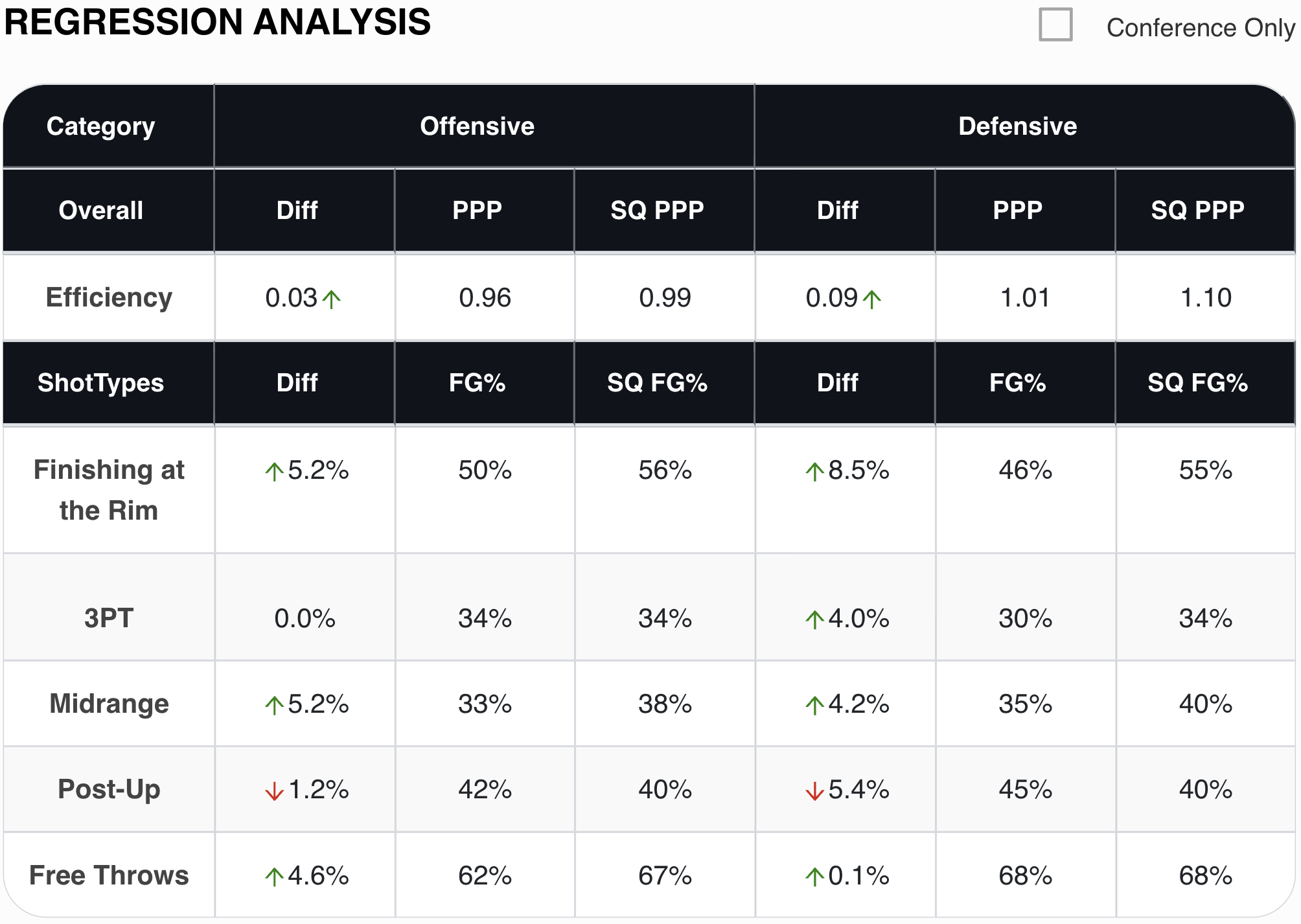
Bulldog Betting Thoughts
You don’t jump over six Defensive Efficiency points based on “gutty” improvements.
You get lucky.
Hey, that win over FAU was memorable. But the Owls shot 5-for-30 from 3 (16.7%) and 13-for-20 from the charity stripe (65%). That won’t happen again.
Bryant still isn’t rebounding well. It’s fouling too much. It’s struggling to create turnovers. The zone is still too passive.
Moreover, a passive zone defense is a bad matchup against other AmEast offenses. Vermont could cook Bryant from the perimeter. Binghamton's cut-heavy offense, spearheaded by elite passer Symir Torrence, is perfect for back-dooring zone coverages. Even NJIT has an elite pin-man, Kjell de Graaf, who could exploit Bryant at the top of the key. Same with Albany and Jonathan Beagle.
Once the opponents' 3-point shots start falling, I suspect Bryant’s defensive metrics will fall off a cliff.
Yes, the Bulldogs have been unlucky on offense, and I’m surprised at how good they’ve been in transition after the past few years – despite all the athletic talent, Bryant has been wildly inefficient running the floor since joining the league last year.
But I still don’t trust the Bulldogs to score efficiently. Sure, they’re getting unlucky at the rim, but they’re shooting a staggeringly poor 30% in the paint (third percentile) and 35% in the mid-range. Overall, Bryant ranks 258th nationally in 2-point shooting (47%).
Bryant will always be a dangerous team, but I don’t trust the Bulldogs when push comes to shove. I suspect they’ll devolve back into a quick-strike, high-scoring-but-inefficient offense and a passive, ineffective defense.
Otherwise put: “They are who we thought they were.”
And while we have to upgrade Bryant in our power ratings after the Grasso-to-Martelli move, I wouldn’t take him in crunch time over Becker, Pat Duquette or Markwood.
Pick: Fade Bryant
Bet college hoops with the latest BetMGM bonus code.
New Hampshire Wildcats
At the beginning of the year, Davis told me he expected the Wildcats to play faster than ever. He thought they’d sneak into the top-50 nationally in the pace of play.
So far, they’ve exceeded expectations, ranking 22nd nationally in tempo through non-con play.
Even more impressive, they’re taking care of the ball. The Wildcats rank in the top-70 nationally in turnover rate, with JUCO transfer point guard Ahmad Robinson posting a gaudy assist-to-turnover rate.

Clarence Daniels is still the best player in the conference. He’s averaging 20/10 on 48%/41%/78% shooting splits while getting to the line plenty.
As I’ve written before, Daniels is a matchup nightmare — a 6-foot-6, 210-pound three-level scorer who crashes the two-way boards better than any other AmEast player.
He’s also improved defensively, snatching 1.5 steals per game and allowing only .36 PPP defending on an island (30th nationally among D-I players).
Former head coach Herrion was stuck in his ways. Despite coaching an elite AmEast defense, the Wildcats never got over the hump because of a plodding, inefficient offense, thrice costing them in the conference tournament semifinals.
But with Davis pushing the pace and Robinson playing like an All-AmEast guard, everything opens up for the Wildcats. For what it’s worth, they’ve snuck up to fourth in KenPom’s AmEast ratings, and they were the conference's best ATS team in non-con play, covering eight of 12.
I actually think the Wildcats could be a good buy team in the futures market. Davis' up-tempo style injects more variance into New Hampshire basketball, and the Wildcats still have the conference’s best go-to guy and a usually elite defense.
If things break their way, you could see Daniels driving against Pelle Larsson in March.
Wildcat Betting Thoughts
Unfortunately, I still have several concerns about the team.
The offense is playing fast, but it’s not scoring very efficiently. The Wildcats rank 304th in 2-point shooting (45%), failing to generate consistent buckets at the rim (.96 PPP, 359th) or in the post (.80 PPP, 183rd). They’re running hard in transition and getting the ball in the post, but they’re not generating the best on-the-block opportunities.
They’re shooting well from deep (35%) on high volume (44th nationally in 3-point rate). Still, they’re not generating enough open jumpers (40% of total catch-and-shoot opportunities), which doesn’t bode well for a perimeter-based jump-shooting squad – the regression monster is probably hanging out somewhere in Durham.
Regression may loom larger on defense. Wildcat opponents are shooting only 28% from 3, but ShotQuality projects that number closer to 34% based on the “quality” of attempts. That’s likely because opponents are generating only .85 PPP on unguarded jumpers, about .22 under expectation.
And I need to see more from Jaxson Baker and Trey Woodyard as frontcourt compliments to Daniels.
The Wildcats' post defense is a mess, ranking dead last nationally in post-up PPP allowed (1.22), and they’re allowing a whopping 38 paint points per game.
That’s almost a direct result of Baker and Woodyard getting eaten alive on the low block by every opposing big man. It’s effortless to generate interior buckets on the Wildcats, which explains why they allow so many open jumpers – if those start to fall, yikes.
Both have been good offensively, and Woodyard is hitting a whopping 48% of his 3s as a stretch four. But shooting regression is coming, and their poor defense outweighs their good offense.
New Hampshire has improved, and the new style of play is a good thing in the long run. That said, I’m unsure how good the team is. The ‘Cats have looked electric in wins – like when Daniels dropped 36/9 in an 18-point win over Brown — but they also lost to KenPom No. 323 Dartmouth.
I’ll probably be selling UNH on a game-to-game basis, as I think it’s a tad overvalued, even if the Wildcats present the type of high-variance upside alluring in potential long shots.
Pick: Fade New Hampshire ATS on a game-to-game basis
Binghamton Bearcats
Binghamton is behind Albany in KenPom, but the Bearcats are one of the only AmEast teams due for positive regression.
I wrote in my preseason manifesto that Binghamton was a good team to sell in the non-con and buy in conference play. I think now’s still the time to buy.
You see, Binghamton is getting unlucky from 3 both ways.
Offensively, the Bearcats are generating only 1.03 PPP on unguarded jumpers, which is about .06 off expectation.
Defensively, opponents are generating 1.00 PPP on guarded jumpers, which is about .07 over expectation. That’s even more encouraging when you consider Binghamton is closing out on about 60% of catch-and-shooters, well above the national average.
So, ShotQuality projects the Bearcats for about 2% of positive shooting regression on offense and 3% on defense, based on the “quality” of attempts taken and allowed. It’s slim margins, but it’s meaningful when added together.
The interior defense has been great. As I expected he would, Tariq Balogun has re-found his shot-blocking prowess in the starting center role, swatting a shot per game. He’s also been tremendous against post-up sets (.30 PPP allowed, 17th nationally) and spearheads a defense ranking 90th in 2-point shooting allowed (47%).
He’s also scoring 8.4 points per game on 64% true-shooting, with almost all of his production coming in the paint off drop-cuts and post-ups.
Unfortunately, he’s been in and out of the lineup for the past few weeks. I haven’t seen any concerning news, but I would be mindful of his status if you plan on betting Bearcat basketball over the next few weeks.
That said, opposing 3s won’t fall forever. And once they stop, Binghamton’s interior defense will bump its defensive metrics.
Meanwhile, point guard Symir Torrence is shining in his first meaningful starting role. He’s been a high-major bench piece for years (Syracuse, Marquette), but he’s dishing out seven dimes per game with a 37% assist rate across 33 minutes per night.
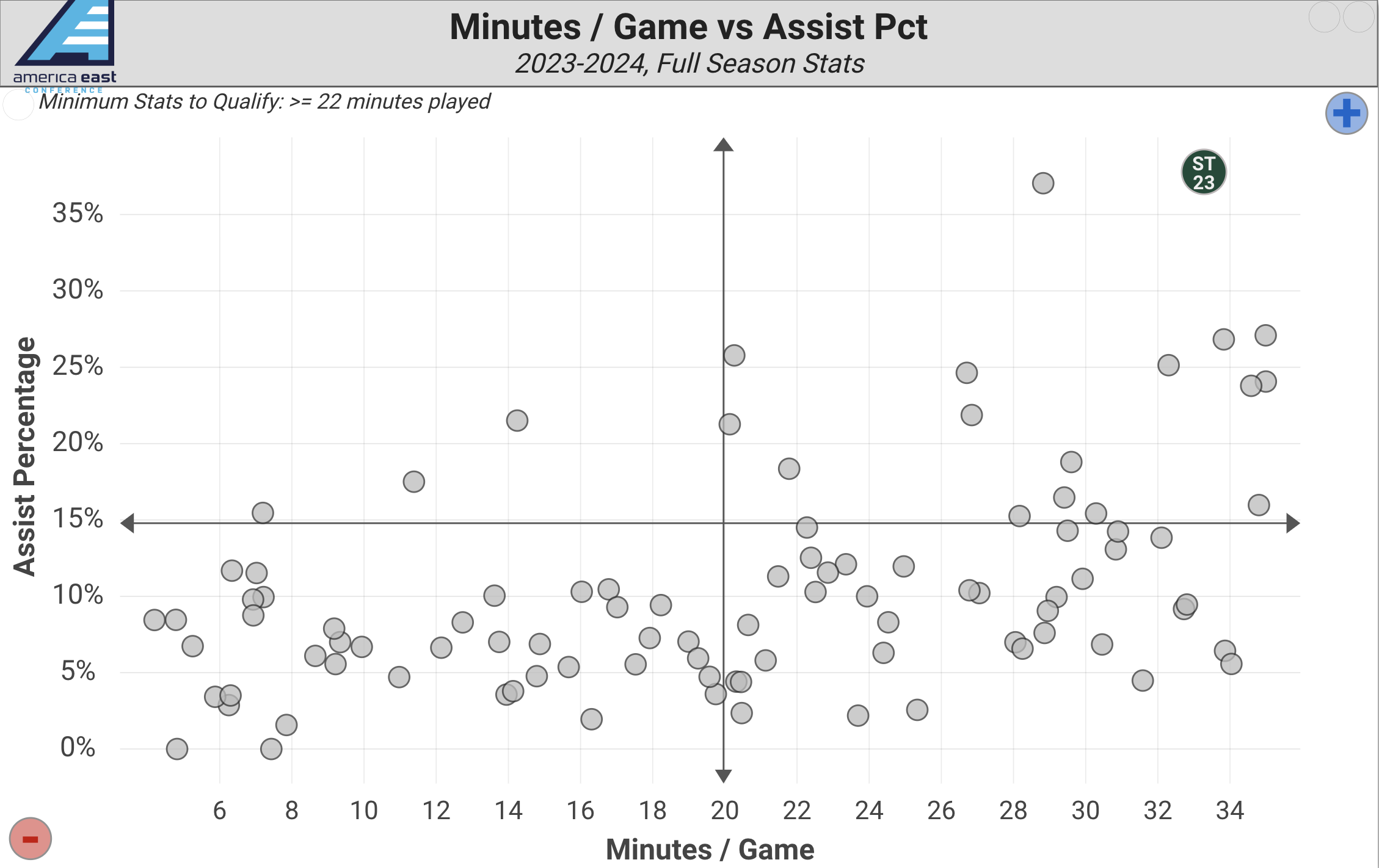
He’s so crucial to Levell Sanders’ cut-heavy offense. No team in the country cuts more than the Bearcats, dialing up the cut-to-the-basket play about 10 times per game. Torrence is hitting Balogun, Tymu Chenery and Armon Harried consistently in stride.
Speaking of Chenery, Coach Sanders was high on him in the preseason, and he’s living up to expectations. He’s pouring in a team-high 15 points per game and 7.5 paint points per game while shooting 33% from 3 and generating five free-throw attempts per game, all as Binghamton’s highest-usage player.
He’s also quietly blocking 1.8 shots per game as a small-ball four, proving instrumental to Binghamton’s elite interior defense. I love myself a good, versatile two-way wing.
Bearcat Betting Thoughts
And that’s what I’ve always loved about Binghamton.
There’s a ton of two-way versatility on the squad. Meanwhile, Torrence and Balgoun are living up to expectations as a potentially elite inside-out duo.
The Bearcats are just getting unlucky. So, I think they’re undervalued and a great play-on team in conference play.
It’s also worth mentioning that this is a relatively new team. The Bearcats lost their two highest-usage guards from the past few years in the offseason — Jacob Falko and John McGriff — and their starting small-ball center, Christian Hinckson.
So, as the team continues to gel and build chemistry under Coach Sanders, I only see the Bearcats improving, potentially peaking in February and March.
The main improvements need to come on the wing, specifically from Harried and Dan Petcash.
Harried is a smooth-slashing wing scoring in bunches on off-ball cut passes from Torrence (1.47 PPP, 84th percentile), and he’s getting to the line a solid amount.
But, as I mentioned in my preseason preview, he’s a horrific free-throw shooter. He hasn’t improved, shooting 65% from the line this season.
You already know how to get to the charity stripe, now cash them in.
Petcash is the team’s best spot-up shooter, and his spacing is instrumental in opening up cutting lanes for Torrence to hit. Additionally, he could benefit significantly from Torrence's drive-and-kicks.
But he’s not making enough shots yet, shooting only 32% from 3. He shot 47% in conference play last year, so I think he’s just part of Binghamton’s general unluckiness.
Regardless, Binghamton is a buy team for the rest of the year. I’ll be betting on it plenty in conference play.
Pick: Target Binghamton ATS
Albany Great Danes
Here’s what I wrote about Albany in my preseason preview piece:
I can’t help thinking they’ll exceed expectations. There’s a ton of untapped potential in this group.
So far, so good. The Danes went 8-6 ATS in non-conference play and jumped 55 spots in KenPom’s ratings.
The Danes are really dynamic. They’re a cutting, rim-running half-court offense that also loves to push in transition. They’re playing at the nation’s 13th-highest pace.
Jonathan Beagle is the most dynamic of the bunch. The reigning AmEast ROY is showing why he earned the coveted award, as the on-ball forward is scoring 14 points per game on 63% true-shooting. He earned conference Player of the Week honors after scoring 19 against Sacred Heart, 17 against South Florida, 21 against Long Island and 16 against Harvard.
He just doesn’t play like a big man. He plays like an oversized guard. He faces up defenders on the perimeter, drives to the basket and dishes out beautiful passes for easy assists.
That said, he’s happy to post up smaller defenders on the block. He’s a unicorn and a matchup problem for any opposing coach.
We haven’t seen much of Justin Neely, who’s likely still recovering from last year’s season-ending injury. But I’ll be happy if we see him, as he’s a different kind of big from Beagle – a back-to-the-basket post merchant.
Despite their talented frontcourt, the Danes are primarily a guard-first team. That makes sense, as Killings’ new up-tempo offense needs speedy guards to initiate quick-strike offense.
I’m unsure if that’s a good thing.
Rhode Island transfer Sebastian Thomas is playing well at point, boasting a 27% assist rate while living at the line. Meanwhile, Amar’e Marshall, Tyler Bertram and Marcus Jackson are shooting a combined 33% from 3, boasting an ORtg above 100.
But why are you not running your offense through your best player? Beagle’s usage rate is far too low for such a dominant, efficient, versatile player.
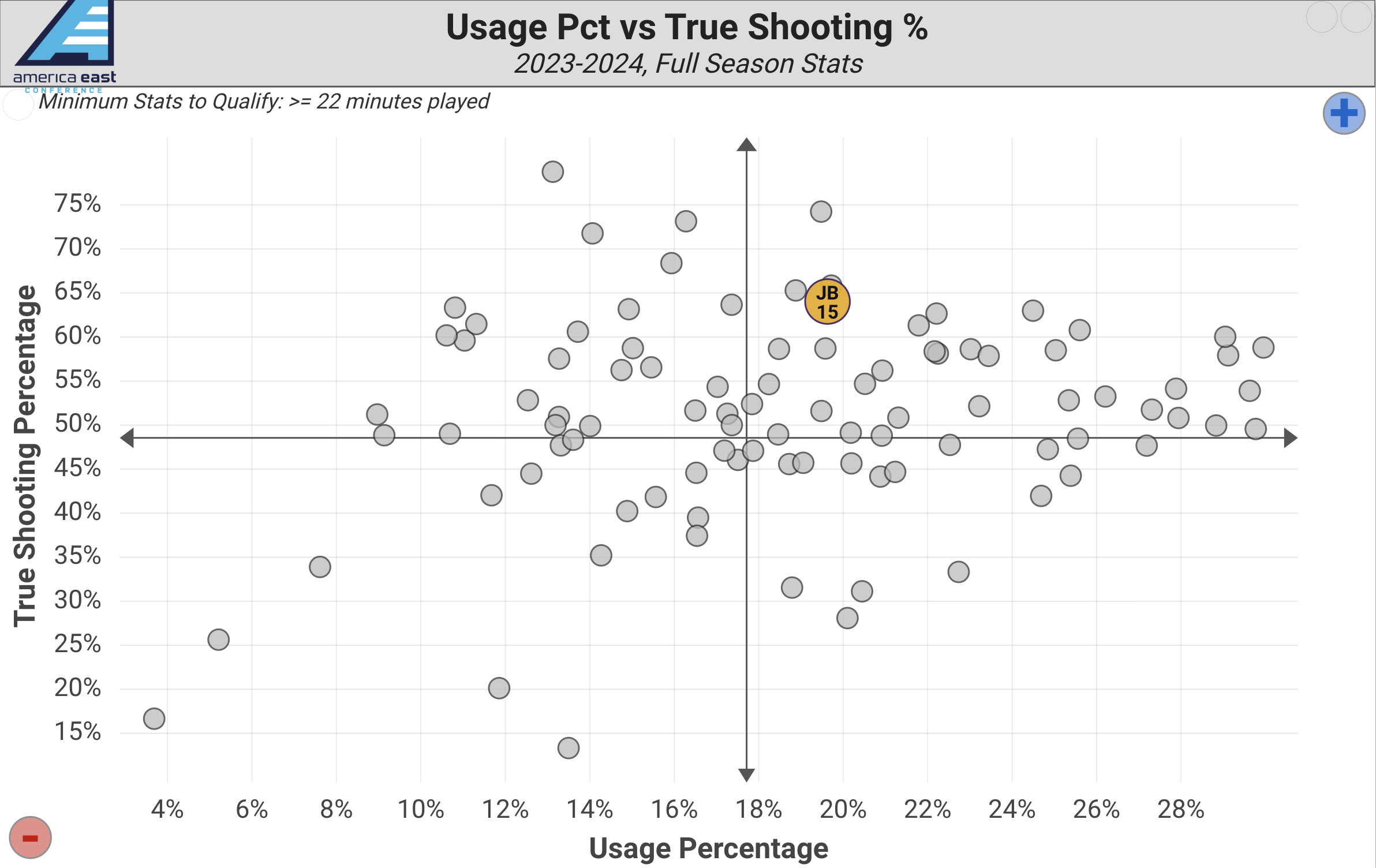
I’m also unsure where Aaron Reddish is. He’s a top-flight athlete who's gotten stuck deep in the rotation. He’s started only four games, playing only 18 minutes per night. Then again, he hasn’t been very efficient when scoring or defending.
Of more importance, Albany is beginning to defend again. The defense dropped off a cliff last season after several critical Danes defenders suffered injuries, dropping to 354th nationally in Defensive Efficiency.
This year, they’ve jumped to 225th. The Danes are defending in isolation, holding their own against ball screens and in the post and running opponents off the 3-point line at the nation’s 10th-highest rate (28% 3-point rate allowed).
Great Dane Betting Thoughts
As our Bryant analysis shows, you don’t jump over 100 spots in Defensive Efficiency on sheer talent alone.
You get lucky.
The Danes have allowed 56% of their opponents' jumpers to come unguarded, the 24th-highest mark nationally. And those opponents have generated only .86 PPP on those shots, the 24th-lowest mark nationally.
That’s wildly unsustainable. Albany ranks 15th nationally in 3-point defense at 27%, but ShotQuality projects that number closer to 33% based on the “quality” of attempts.
Once those 3s start falling, Albany’s defensive metrics likely drop off a cliff.
Additionally, the Danes have benefitted from some late-game luck to help cover some spreads. They’ve used late-game runs to pull away from teams like Boston University and Long Island, and they could be due for some close-game regression.
I love the Danes’ dynamism. I love how much young talent is on the squad and how they’re all improving in Coach Killings’ third season. I love watching them play their up-tempo style of ball.
But the Danes are simply overvalued based on shooting luck.
They’re a fade team, at least in the short term, until the 3-point metrics steady.
Pick: Fade Albany ATS in the Short Term
Before wagering on the America East, unlock bonus bets using Action’s BetRivers promo code.
Tier 4: Cellar Dwellers
NJIT Highlanders
NJIT is the best team in the world … for 30 minutes a night.
As I wrote in my preseason manifesto:
“Unfortunately, the depth is not there for NJIT. The Highlanders are starting two freshmen this season and have three more pegged for serious reserve roles. This might be the youngest team in the conference.”
The Highlanders have no shortage of playmakers.
Adam Hess is a firecracker, nailing 40% of his 3s. Elijah Buchanan is scoring a cool 13 points per night. Mekhi Gray is heating up after a slow start, scoring double-digits in four of his past five. Freshman guard Tariq Francis has been masterful as a ball-screen initiator in Grant Billmeier’s ball-screen-heavy offense (.96 pick-and-roll PPP, 80th percentile) and versatile big man Kjell de Graaf has been a perfect partner (1.28 pick-and-roll PPP, 76th percentile).
De Graaf is an under-the-radar big man. His inside-out versatility is key in stretching the floor for Hess and the other dangerous wings. He’s shooting a whopping 64% inside the arc and 46% from 3, with his 73% true-shooting ranking second among AmEast players this year, only behind Coulibaly.
This group of players can give any team fits on any given night. And they’re playing decent two-way basketball.
NJIT is solid scoring in ball-screens and defending ball-screens. The Highlanders have been good at defending down low in the post (.61 PPP allowed, 96th percentile).
But the Highlanders need more depth. They fall apart once the legs give out late in the second half.
I have several examples.
- NJIT led Delaware State by 16 at half and were out-scored 42-35 in the second half.
- NJIT trailed Wagner by one at half and lost by 13, scoring only 22 second-half points.
- NJIT trailed George Mason by one at half and lost by 18.
- NJIT led FDU by seven at half and lost by three, again scoring only 22 second-half points.
- NJIT was down six to Wake Forest after 30 minutes and was outscored 28-10 down the stretch.
- NJIT led Niagara by one at half and lost by seven.
The Highlanders get crushed during any bench minutes. Their traditional starting five-man lineup has a +9.8 net rating. Every other lineup has combined for a -25.9.
Highlander Betting Thoughts
I think the Highlanders are undervalued because their top group is great. Their starting five has good spacing, shooting, guard play and two-way wing play.
But we must account for the lack of depth when handicapping them.
There will be plenty of spots to target the Highlanders. When a top-tier AmEast team comes to Newark in a poor situation, Hess and Co. will catch them sleeping and fire away.
But good, well-rounded teams will burn them in bench minutes and crunch time, and NJIT won’t end up victorious too many times this year.
I’ll be looking to target NJIT in the first half almost whenever it’s catching points. The Highlanders have a -2.4 average first-half scoring margin and a -10.9 average game margin. They’ll take advantage of their starting minutes and stay in games for 20 minutes, especially against squads unaware of their capabilities.
Pick: Target NJIT 1H ATS
UMBC Retrievers
Following wins over Sacred Heart and Loyola Maryland, I thought maybe I’d underrated Jim Ferry and this fresh-faced squad.
Remember, Ferry lost 90% of its possession minutes in the offseason. The top seven scorers departed, including all five starters.
Ferry was working with a complete rebuild. But he’s a good coach, so maybe he built chemistry with his squad quickly.
Nope.
UMBC lost eight of the next 10 games, including ones to Coppin State, Morgan State, and William & Mary.
The Retrievers were always frauds. This is a rebuilding year for Ferry.
UMBC can still score by running the floor and firing from deep.
But the defense is dreadful. The unproven frontcourt of Khydarius Smith and Ashton Reese are getting cooked by posters and cutters in transition and at the rim. The Retrievers rank 300th nationally in 2-point shooting allowed, 316th in defensive turnover rate, 242nd in block rate and 290th in defensive rebounding rate.
They’re allowing a whopping 42 paint points per game! That’s among the worst marks nationally.
Retriever Betting Thoughts
Surprisingly, UMBC could get worse.
ShotQuality projects the Retrievers for two-way negative shooting regression. They’ve been lucky shooting the 3 and with opponents shooting the 3. By their Adjusted Efficiency metrics, which are based on the “quality” of shots taken and allowed, UMBC ranks 360th among 362 D-I teams.
The Retrievers are inexperienced and don’t know how to play together. And it’s showing. And it’s going to get worse.
This is a fade team in conference play, as the Retrievers are the league’s worst team – and it might not be close.
Even better, their uber-fast style (second in tempo) provides plenty of extra possessions to opposing offenses, which is a bad style for a terrible team. UMBC could be prone to blowouts in conference play, especially against a team like Vermont.
Pick: Fade UMBC
America East Betting Angles
- Bet Maine to win America East Regular Season (17-to-1 at BetRivers)
- Target UMass Lowell with Coulibaly
- Fade UMass Lowell without Coulibaly
- Fade Bryant
- Fade New Hampshire ATS on a Game-to-Game Basis
- Target Binghamton ATS
- Fade Albany ATS in the Short-Term
- Target NJIT 1H ATS
- Fade UMBC



